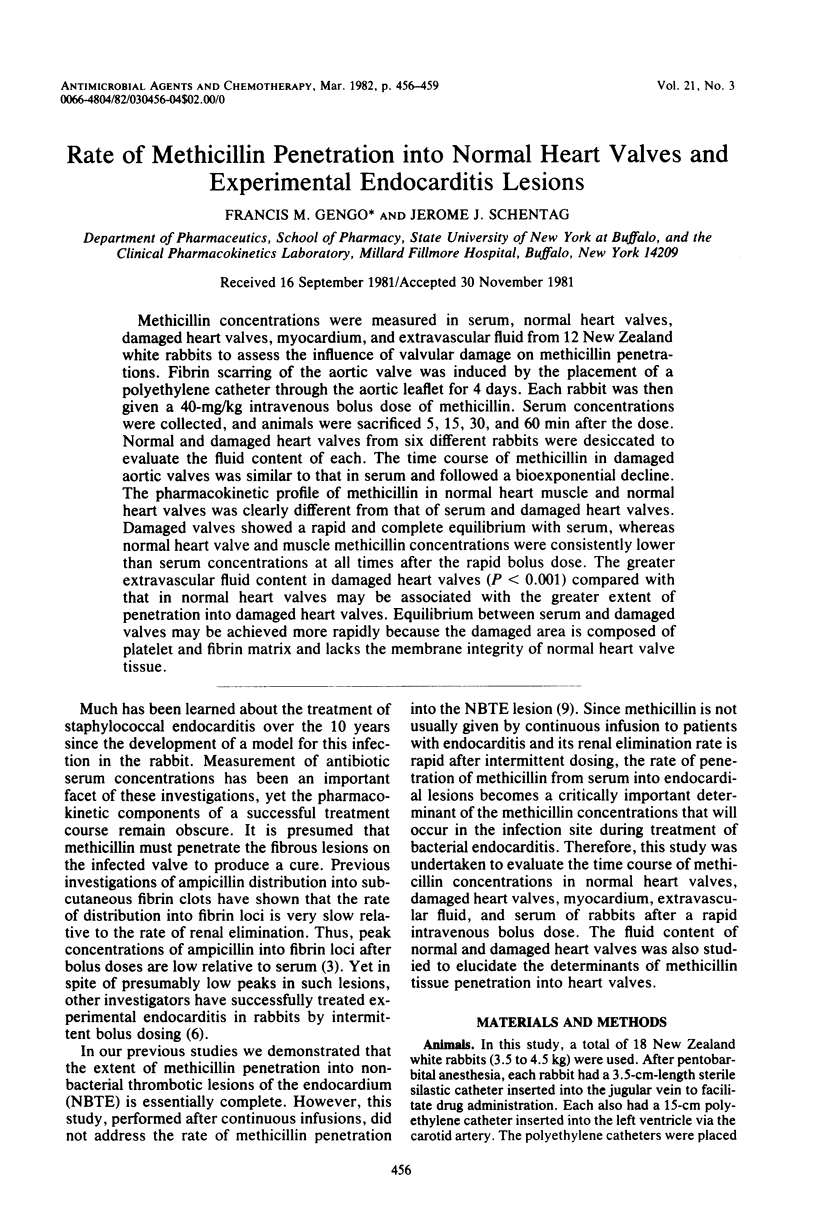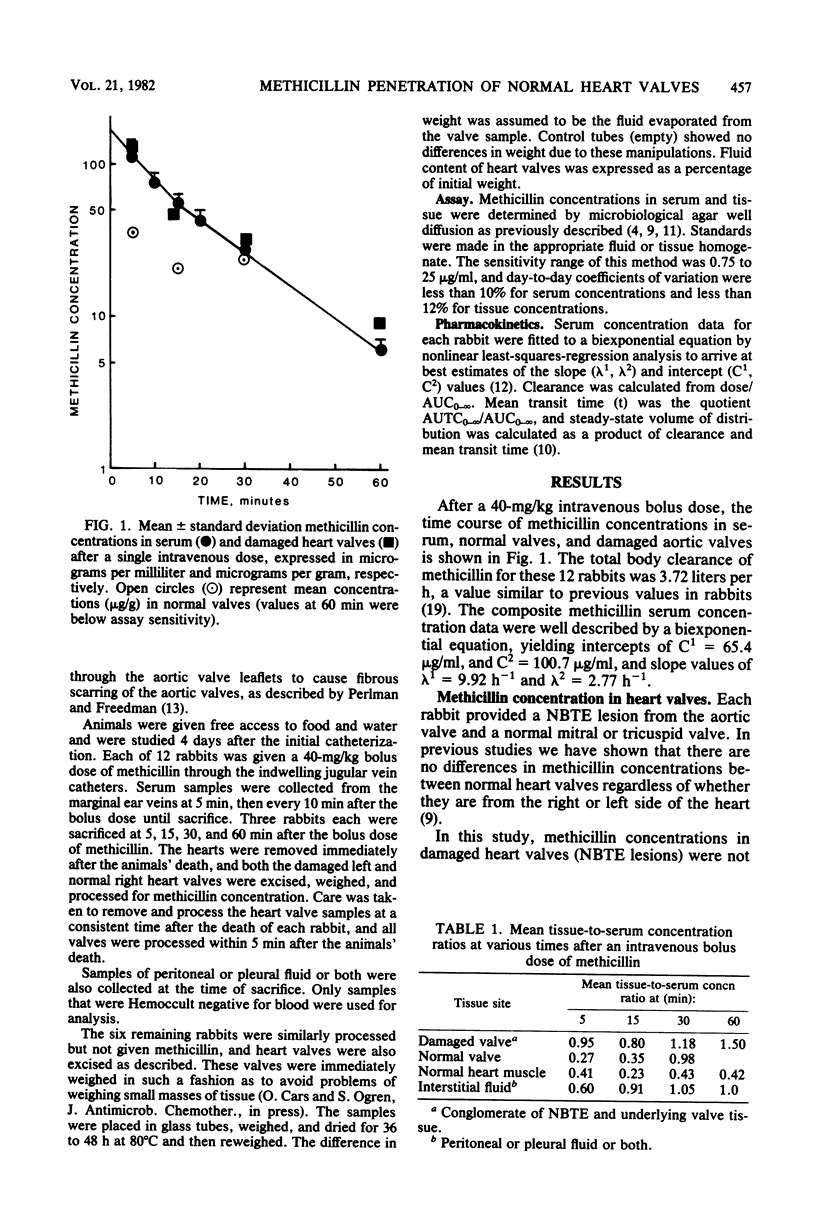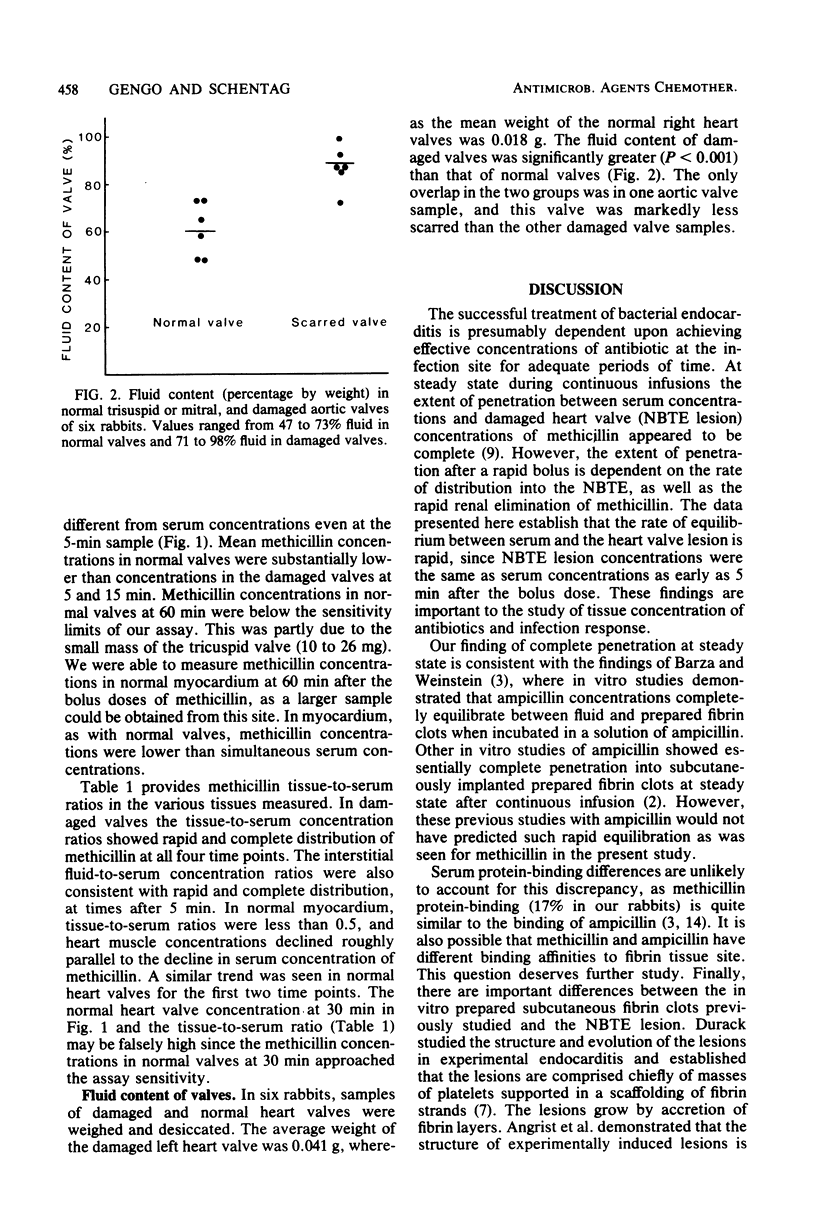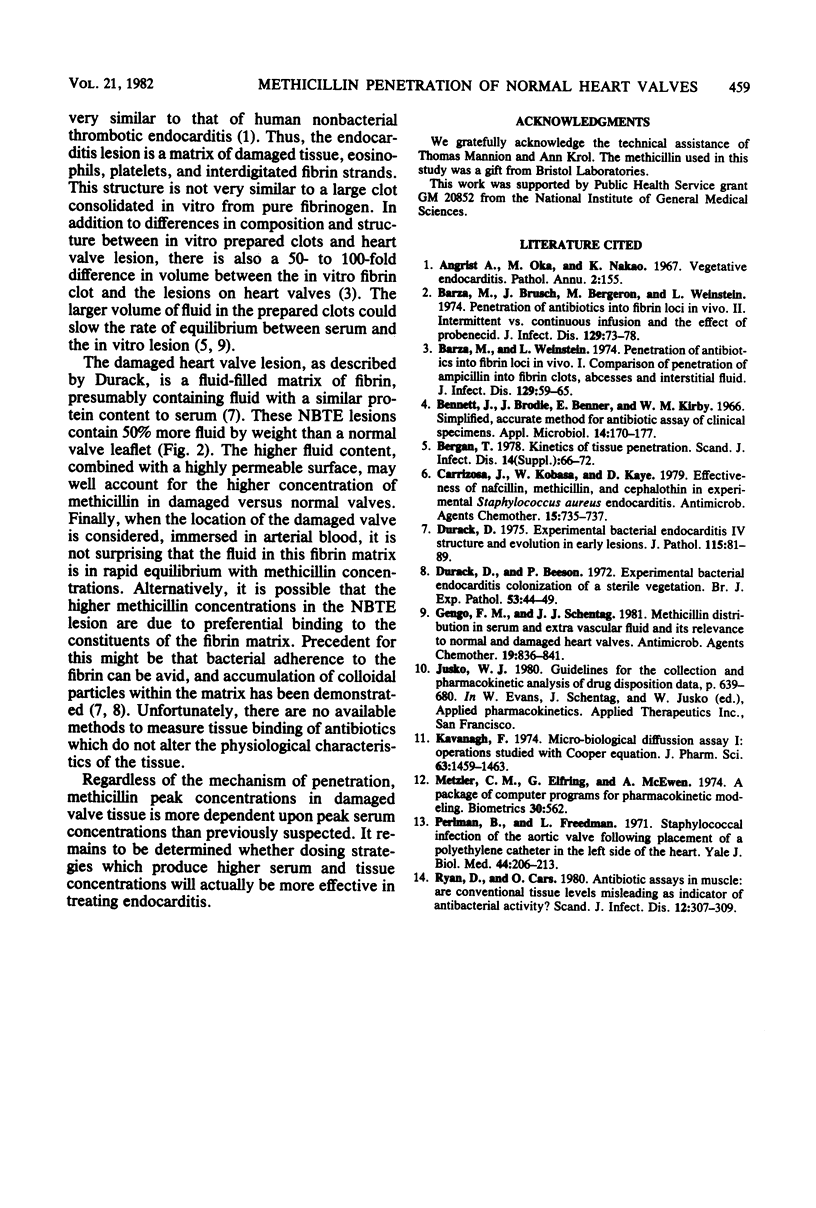Abstract
Methicillin concentrations were measured in serum, normal heart valves, damaged heart valves, myocardium, and extravascular fluid from 12 New Zealand white rabbits to assess the influence of valvular damage on methicillin penetrations. Fibrin scarring of the aortic valve was induced by the placement of a polyethylene catheter through the aortic leaflet for 4 days. Each rabbit was then given a 40-mg/kg intravenous bolus dose of methicillin. Serum concentrations were collected, and animals were sacrificed 5, 15, 30, and 60 min after the dose. Normal and damaged heart valves from six different rabbits were desiccated to evaluate the fluid content of each. The time course of methicillin in damaged aortic valves was similar to that in serum and followed a bioexponential decline. The pharmacokinetic profile of methicillin in normal heart muscle and normal heart valves was clearly different from that of serum and damaged heart valves. Damaged valves showed a rapid and complete equilibrium with serum, whereas normal heart valve and muscle methicillin concentrations were consistently lower than serum concentrations at all times after the rapid bolus dose. The greater extravascular fluid content in damaged heart valves (P less than 0.001) compared with that in normal heart valves may be associated with the greater extent of penetration into damaged heart valves. Equilibrium between serum and damaged valves may be achieved more rapidly because the damaged area is composed of platelet and fibrin matrix and lacks the membrane integrity of normal heart valve tissue.
Full text
PDF



Selected References
These references are in PubMed. This may not be the complete list of references from this article.
- Barza M., Brusch J., Bergeron M. G., Weinstein L. Penetration of antibiotics into fibrin loci in vivo. 3. Intermittent vs. continuous infusion and the effect of probenecid. J Infect Dis. 1974 Jan;129(1):73–78. doi: 10.1093/infdis/129.1.73. [DOI] [PubMed] [Google Scholar]
- Barza M., Weinstein L. Penetration of antibiotics into fibrin loci in vivo. I. Comparison of penetration of ampicillin into fibrin clots, abscesses, and "interstitial fluid". J Infect Dis. 1974 Jan;129(1):59–65. doi: 10.1093/infdis/129.1.59. [DOI] [PubMed] [Google Scholar]
- Bennett J. V., Brodie J. L., Benner E. J., Kirby W. M. Simplified, accurate method for antibiotic assay of clinical specimens. Appl Microbiol. 1966 Mar;14(2):170–177. doi: 10.1128/am.14.2.170-177.1966. [DOI] [PMC free article] [PubMed] [Google Scholar]
- Carrizosa J., Kobasa W. D., Kaye D. Effectiveness of nafcillin, methicillin, and cephalothin in experimental Staphylococcus aureus endocarditis. Antimicrob Agents Chemother. 1979 May;15(5):735–737. doi: 10.1128/aac.15.5.735. [DOI] [PMC free article] [PubMed] [Google Scholar]
- Durack D. T., Beeson P. B. Experimental bacterial endocarditis. I. Colonization of a sterile vegetation. Br J Exp Pathol. 1972 Feb;53(1):44–49. [PMC free article] [PubMed] [Google Scholar]
- Durack D. T. Experimental bacterial endocarditis. IV. Structure and evolution of very early lesions. J Pathol. 1975 Feb;115(2):81–89. doi: 10.1002/path.1711150204. [DOI] [PubMed] [Google Scholar]
- Gengo F. M., Schentag J. J. Methicillin distribution in serum and extravascular fluid and its relevance to normal and damaged heart valves. Antimicrob Agents Chemother. 1981 May;19(5):836–841. doi: 10.1128/aac.19.5.836. [DOI] [PMC free article] [PubMed] [Google Scholar]
- Kavanagh F. W. Microbiological diffusion assay I: operations studied with Cooper equation. J Pharm Sci. 1974 Sep;63(9):1459–1453. doi: 10.1002/jps.2600630929. [DOI] [PubMed] [Google Scholar]
- Perlman B. B., Freedman L. R. Experimental endocarditis. II. Staphylococcal infection of the aortic valve following placement of a polyethylene catheter in the left side of the heart. Yale J Biol Med. 1971 Oct;44(2):206–213. [PMC free article] [PubMed] [Google Scholar]
- Ryan D. M., Cars O. Antibiotic assays in muscle: are conventional tissue levels misleading as indicator of the antibacterial activity? Scand J Infect Dis. 1980;12(4):307–309. doi: 10.3109/inf.1980.12.issue-4.12. [DOI] [PubMed] [Google Scholar]


